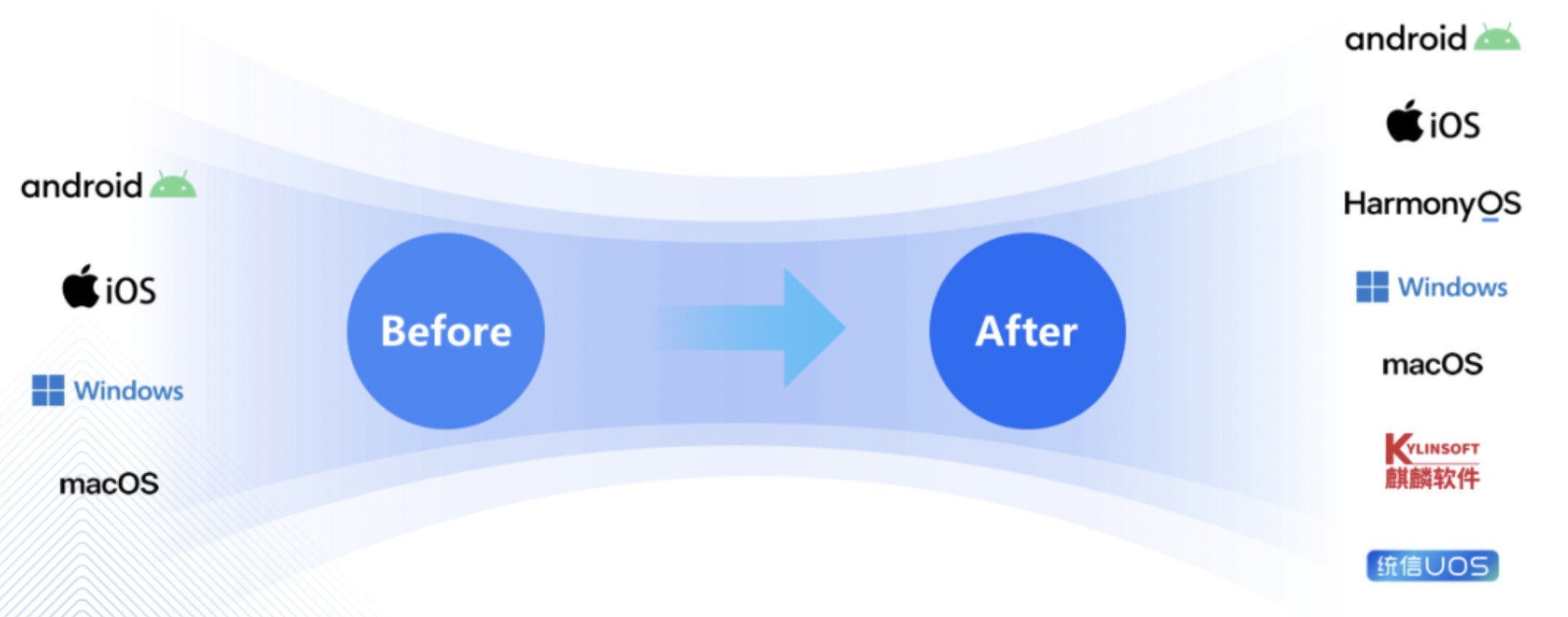洞察管理小程序实例的关键在于实现跨平台能力与数据安全,如何利用FinClip助力企业在数字化转型中既合规又高效?
612
2022-10-11

对原生小程序开发进行简单的扩展封装(微信小程序 封装)

redux-miniprogram-bindings
适用于小程序的 Redux 绑定辅助库
特性
API 简单灵活,只需一个 connect 即可轻松使用功能完善,提供了多种使用方式,可满足不同的需求和使用场景支持在 XML 中使用执行 dispatch 后所有未销毁的页面(或组件)内部状态自动更新,视图自动更新渲染自动进行 diff 优化和批量队列更新处理,性能优异同时支持 微信小程序 和 支付宝小程序
安装
通过 npm 或 yarn 安装# npm$ npm install --save redux-miniprogram-bindings redux# yarn$ yarn add redux-miniprogram-bindings redux 直接引入 dist 目录下对应的 redux-miniprogram-bindings 文件,同时需要引入 redux 文件
使用
创建 Redux 的 Store 实例 在 app.js 文件中设置 providerimport store from 'your/store/path'// 微信小程序import { setProvider } from 'redux-miniprogram-bindings'// 支付宝小程序import { setProvider } from 'redux-miniprogram-bindings/dist/redux-miniprogram-bindings.alipay.min.js'// 在其它依赖 store 的代码之前调用setProvider({ store })// ...App({}) 在页面中使用import { connect } from 'redux-miniprogram-bindings'import { actionCreator1, actionCreator2 } from 'your/store/action-creators/path'connect({ mapState: ['dependent', 'state'], mapDispatch: { methodsName1: actionCreator1, methodsName2: actionCreator2, },})({ onLoad() { // 读取 state 中的值 const { dependent } = this.data // dispatch actionCreator1 this.methodsName1() // dispatch actionCreator2 this.methodsName2(/** ...args */) },}) 在组件中使用import { connect } from 'redux-miniprogram-bindings'import { actionCreator1, actionCreator2 } from 'your/store/action-creators/path'connect({ type: 'component', mapState: [ (state) => ({ data1: state.dependent, data2: state.state, }), ], mapDispatch: (dispatch) => ({ methodsName1: () => dispatch(actionCreator1()), methodsName2: (...args) => dispatch(actionCreator2(...args)), }),})({ attached() { // 读取 state 中的值 const { data1: dependent } = this.data // dispatch actionCreator1 this.methodsName1() // dispatch actionCreator2 this.methodsName2(/** ...args */) },}) 在 XML 中使用
API
setProvider - 配置 store
store:Object Redux 的 Store 实例对象,必传 namespace:string 命名空间,默认为空。当设置命名空间后,会将所有依赖的 state 数据存放到以命名空间字段值为 key 的对象中,此时读取 state 值需要加上命名空间字段值 例如设置 namespace: '$store' ,那么在页面(或组件)中获取依赖的 state 值需要使用 this.data.$store.xxx 形式命名空间存在的意义:明确哪些是 store 中的数据,哪些是 data 中的数据store 中的数据必须通过 dispatch 触发更新,可以避免无意中使用 this.setData 造成 store 中的数据更新,因为更新时需要加上额外的命名空间前缀 manual:boolean 是否需要手动调用 Page() 和 Component(),默认为 false。当设置为 true 时,connect 会返回处理好的传入的 options 对象,需要主动调用 Page() 或 Component() 进行实例注册。这为使用者自定义扩展提供了途径。如果 connect 中也配置了该属性,会覆盖此处的配置,以 connect 中的配置为准Page( connect({ manual: true, })({}),)
connect - 连接 store
type:"page" | "component" 所连接实例的类型,可选值:page、component,默认为 page mapState:(string | ((state: Object) => Object))[] 实例依赖的 state,可选。会将依赖的 store 数据注入到 data 中,并在后续状态改变时自动更新 数组中的字符串:字符串为依赖的 state 的相应的 key 值,页面(或组件)会在依赖的 state 发生改变时自动更新状态和队列批量触发视图渲染{ mapState: ['state1', 'state2']} 数组中的函数:函数接收 state 作为参数,可通过 state 获取到最新的状态数据,该函数必须返回一个对象,对象中的每一项可以是任意值,一般是根据 state 组合的数据。该方式会在 store 数据发生改变(并非一定是当前实例依赖的状态发生改变)时执行函数,然后对函数返回的结果和现有 data 中的数据进行 diff 比较,确认发生改变后队列批量更新渲染注意:函数会在每次 store 数据发生改变时调用,请确保函数足够的小和快。出于性能优化,建议多使用字符串形式,减少使用函数形式,必要时将两种形式混合使用。{ mapState: [ (state) => ({ region: state.province + state.city + state.area, name: state.userInfo.name, }), ]} 字符串和数字混合{ mapState: [ 'name', (state) => ({ region: state.province + state.city + state.area, }), ]} mapDispatch:Object | dispatch => Object 注入可执行的 dispatch 处理函数或任意函数,可选 对象形式:key 值为自定义函数名,实例内部可以通过该名称访问该方法,value 值为 actionCreator 函数。会将 actionCreator 函数包装成自动调用 disptach 的函数,并注入到实例方法中// 配置mapDispatch: { methodsName1: actionCreator1, methodsName2: actionCreator2,}// 调用this.methodsName1()// 相当于dispatch(actionCreator1())// 调用this.methodsName2(a, b, c)// 相当于dispatch(methodsName2(a, b, c)) 函数形式:函数接收 dispatch 作为参数,返回一个对象,包含自定义整理后的处理函数// 配置mapDispatch: (dispatch) => ({ methodsName1: () => dispatch(actionCreator1()), methodsName2: (...args) => dispatch(actionCreator2(...args)),})// 调用this.methodsName1()this.methodsName2(a, b, c) 注意: 通过 mapDispatch 注入的函数也可以在 XML 中作为事件处理函数使用。如果函数需要传递参数时请注意,事件处理函数默认会传入 event 对象作为函数的第一个参数
$page - connect Page 的别名
$page()({})// 相当于connect({ type: 'page' })({})
$component - connect Component 的别名
$component()({})// 相当于connect({ type: 'component' })({})
Utils
工具函数,调用时请确保已经在 app.js 文件中调用了 setProvider
useStore - 获取 store 实例对象
import { useStore } from 'redux-miniprogram-bindings'const store = useStore()
useState - 获取当前 state 对象
import { useState } from 'redux-miniprogram-bindings'const state = useState()
useDispatch - 获取 dispatch 函数
import { useDispatch } from 'redux-miniprogram-bindings'const dispatch = useDispatch()
useSubscribe - 添加 store 订阅
useSubscribe 接收一个回调函数,该函数会在 store 数据发生改变时调用,该函数接收两个参数,分别是当前状态 currState 和之前状态 prevState,通过对比两者进行细化监听
useSubscribe 返回一个函数,调用该函数终止订阅
import { useSubscribe } from 'redux-miniprogram-bindings'$page()({ onLoad() { // 启用订阅 this.unsubscribe = useSubscribe((currState, prevState) => { if (currState.userInfo.name !== prevState.userInfo.name) { console.log('userName change') } }) }, onUnload() { // 解除订阅 this.unsubscribe() },})
useRef - 获取 state 对象中数据的引用
useRef 接收一个 selector 函数,该函数接收 state 作为参数,可以返回任意值(建议返回使用 state 组装的数据)
useRef 返回一个 Ref 对象,该对象拥有一个只读的 value 属性,通过该属性可以得到 selector 函数返回的最新值
import { useRef } from 'redux-miniprogram-bindings'const selector = (state) => state.userInfo.nameconst userNameRef = useRef(selector)setInterval(() => { // 不管 state 数据是否发生改变 // 得到的永远是 state.userInfo.name 的最新值 console.log(userNameRef.value)}, 1000)
也可以通过如下方式实现相同功能
import { useState } from 'redux-miniprogram-bindings'const selector = (state) => state.userInfo.nameconst getUserName = () => selector(useState())setInterval(() => { // 不管 state 数据是否发生改变 // 得到的永远是 state.userInfo.name 的最新值 console.log(getUserName())}, 1000)
具体使用哪种方式完全看个人喜好,这里只是提供了一个工具方法
diff 逻辑
版权声明:本文内容由网络用户投稿,版权归原作者所有,本站不拥有其著作权,亦不承担相应法律责任。如果您发现本站中有涉嫌抄袭或描述失实的内容,请联系我们jiasou666@gmail.com 处理,核实后本网站将在24小时内删除侵权内容。
发表评论
暂时没有评论,来抢沙发吧~